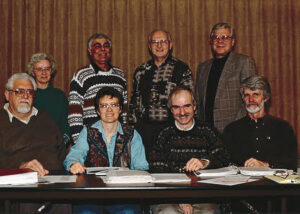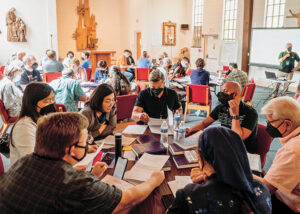I have never met César García, but I am impressed with his story as told by Meetinghouse freelancer Kathy Heinrichs Wiest on page 4. García is the general secretary-elect of Mennonite World Conference.
He seems to have a special narrative, one which might make him the new Mennonite archetype for the 21st century. He just might have the special leadership gifts and personal charisma to bring the 1.6 million worldwide members out of whatever makes us, at times, religiously provincial, sometimes arrogant and stubborn, sometimes divisive and mean-spirited, but is at other times full of grace, vision and hope.
First, he is from Colombia, a small country in the Global South which was not a part of the Mennonite colonization in South America. There are fewer than 3,000 souls who identify themselves as Anabaptists there, freeing them from some of the provincialism European Mennonite immigrants brought with them to other parts of the continent.
Because of this, García presumably has a fresh set of eyes to envision and help shape what the global church should look like in the next 25 years. More culturally free to move easily among the diverse groups of global Mennonites, he says it well when declaring a calling “to eliminate suspicions,” but rather “show appreciation and respect for differences.”
Second, his personal journey of faith is not conventional in any way, including some teen years of rejecting God and the church. It was out of his disillusionment with existentialism and other philosophies that he found a spiritual home in Anabaptism. This prepares him well for identifying with young people who often find themselves in a stifling environment in their home congregations where tradition and a refusal to change sometimes restricts new forms of spirituality.
Third, he has honed his communication skills by working for six years at a Christian radio station where he interacted with Christian leaders from charismatic, evangelical and mainline denominations. This kind of religious “cosmopolitanism” should give him the language breadth he needs to speak to a wide range of groups and bring them into the big tent of Anabaptism.
With these unique gifts, García comes to the global Mennonite church scene at a time of shifting winds. First off, North American and European Mennonites are not happy that they are no longer in the majority, having to give up this birthright to the Global East and Global South because of their increasingly large numbers.
Africa, in fact, is now the leading continent with nearly 600,000 Mennonites, while North America comes in second at less than 525,000. Asian and Pacific countries now number about 265,000 members. Despite our wealth and power, we Canadians and Americans are not growing churches in numbers commensurate with our historic place of influence in shaping the Mennonite narrative and ethos.
Difficult as it is to face this reality, owning up to it we must. We resist, at our own peril, not only limiting the release of spiritual energy and vision that this shift is bringing, but risking our own survival as a people of God with an enduring set of core beliefs of peace, justice, community and discipleship that we have so earnestly and carefully cultivated over the past 500 years.
This set of beliefs is what is attracting many to our circle in recent years, including a new Anabaptist movement in the United Kingdom and beyond through the influence of theologians and authors like Stuart Murray.
What is emerging will not please all of us, particularly those with well-defined spiritual disciplines rooted in historically well-known places which have deeply held cultural expressions mixed in with our beliefs. Those of us tending to resist the changes will have to lighten up and feel the wind with joy, rather than sorrow. Or to use Nelson Kraybill’s apocalyptic metaphor in his recent Mennonite Church Canada assembly speech: “Discover where the river is flowing.”
García, forming his identity out of spiritual struggle, learning to speak a “global” language and hearing the call to unify a sometimes divided church body, is the archetype of a “new” Mennonite, coming to the kingdom for such a time as this.
And why not? Anabaptism is only one brand, one part of the body of Christ that God continues to shape in our troubled world. Will we get on board?







Leave a Reply
You must be logged in to post a comment.